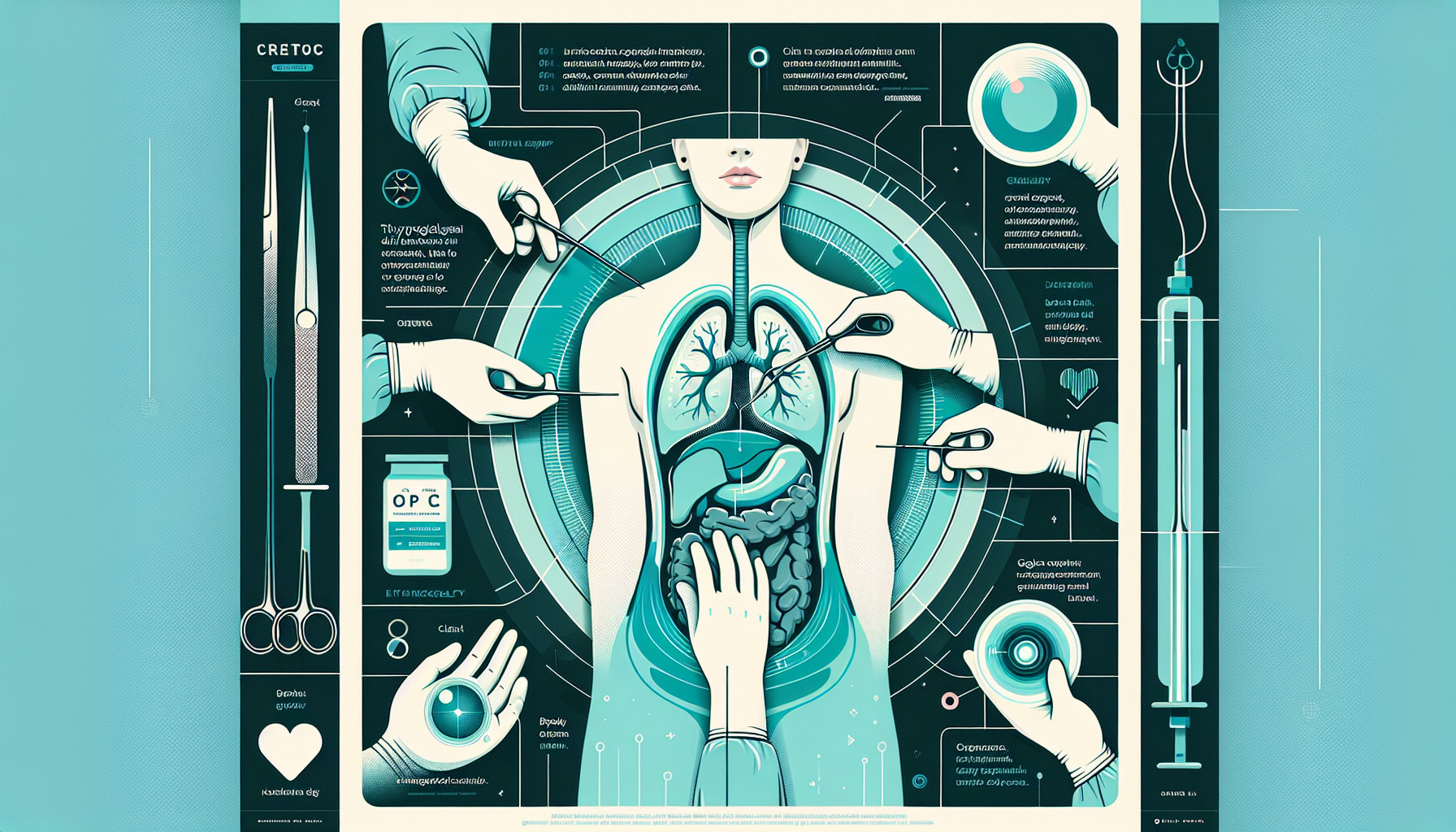Our Summary
This research paper discusses a case of a patient suffering from a thyroglossal duct cyst (TGDC), which is a birth defect that results in a lump in the neck. This condition often needs to be treated with surgery since it can keep coming back and, in rare cases, can lead to cancer. The patient in the study was an adult woman who came in with symptoms of a painful lump in her neck and a fever. She had previously had her TGDC surgically removed when she was a child. A CT scan revealed that her TGDC had returned and was now infected. The authors conclude that in patients who have had a TGDC removed through surgery, there should always be consideration that the cyst could come back and become infected.
FAQs
- What is a thyroglossal duct cyst (TGDC)?
- Why is surgical management often recommended for a thyroglossal duct cyst?
- Can a thyroglossal duct cyst recur after surgical removal?
Doctor’s Tip
Tip: After undergoing thyroglossal duct cyst removal surgery, it is important to follow post-operative care instructions provided by your doctor. This may include keeping the incision site clean and dry, taking prescribed medications as directed, and attending follow-up appointments to monitor healing and prevent complications. If you experience any signs of infection, such as increased pain, redness, swelling, or fever, be sure to contact your healthcare provider immediately for further evaluation and treatment.
Suitable For
Patients who are typically recommended thyroglossal duct cyst removal include:
- Patients with a history of recurrent infections in the neck area associated with the cyst.
- Patients who have previously undergone surgical excision of a thyroglossal duct cyst but have experienced recurrence of the cyst.
- Patients with a thyroglossal duct cyst that is causing symptoms such as pain, tenderness, or difficulty swallowing.
- Patients with a thyroglossal duct cyst that is increasing in size or showing signs of complications such as infection or malignancy.
- Patients who are at risk for complications due to the presence of a thyroglossal duct cyst, such as difficulty breathing or swallowing.
Timeline
Before Thyroglossal Duct Cyst Removal:
- Patient may present with a neck mass that is painless or tender
- Recurrent infections in the neck area
- Possible history of previous surgical excision of a TGDC
- Imaging studies such as computed tomography may be performed to evaluate the cyst
After Thyroglossal Duct Cyst Removal:
- Surgical excision of the TGDC is performed to remove the cyst
- Recovery period post-surgery, which may involve pain management and wound care
- Follow-up appointments with the healthcare provider to monitor healing and ensure no complications arise
- Resolution of symptoms such as recurrent infections and neck mass
- In rare cases, possibility of recurrence or complications may be monitored for in the future
What to Ask Your Doctor
Some questions a patient should ask their doctor about thyroglossal duct cyst removal include:
- What are the risks and benefits of surgery to remove the thyroglossal duct cyst?
- What is the expected recovery time after surgery?
- Will there be any long-term effects or complications from the surgery?
- Will I need to follow up with a specialist after the surgery?
- What is the likelihood of the thyroglossal duct cyst recurring after surgery?
- Are there any alternative treatment options to surgery for the thyroglossal duct cyst?
- Will there be any scarring or changes in appearance after surgery?
- What type of anesthesia will be used during the surgery?
- How many times have you performed this type of surgery before?
- What should I expect during the post-operative period in terms of pain management and wound care?
Reference
Authors: Foti J, Grimaldo F. Journal: Clin Pract Cases Emerg Med. 2020 Aug;4(3):411-413. doi: 10.5811/cpcem.2020.4.46863. PMID: 32926699
